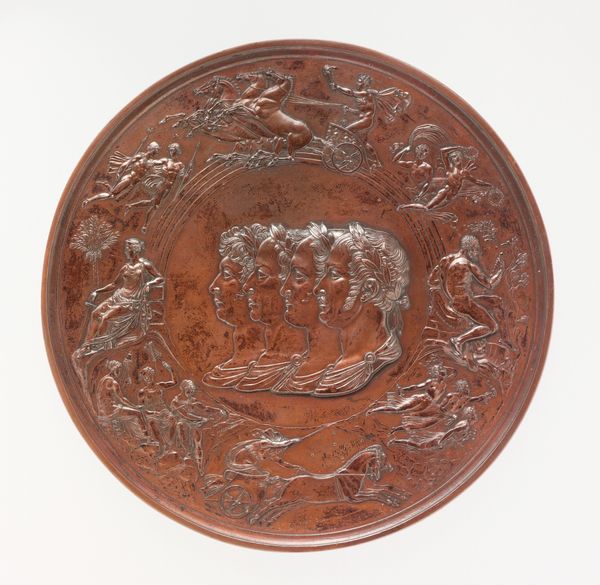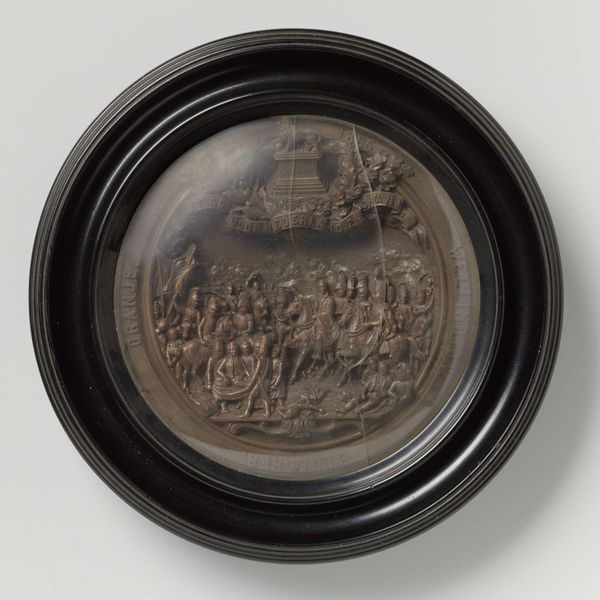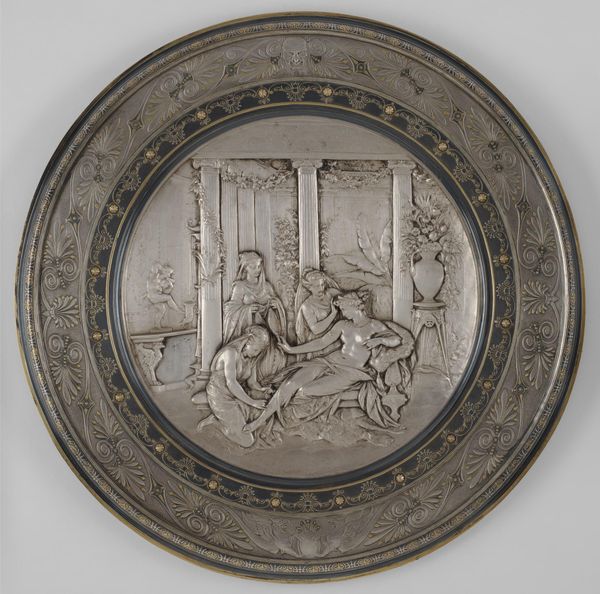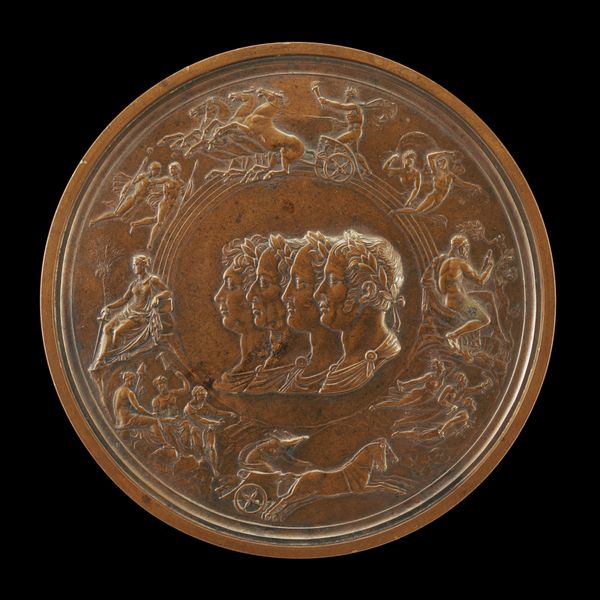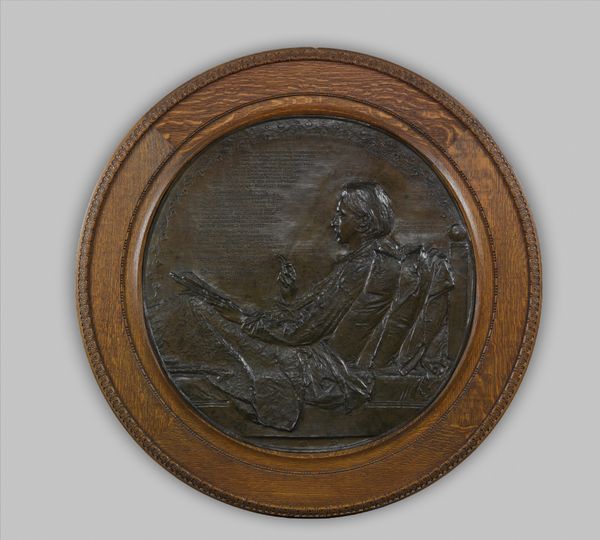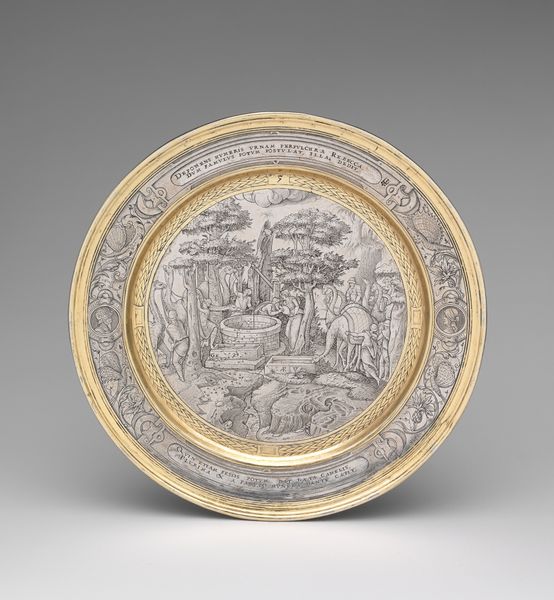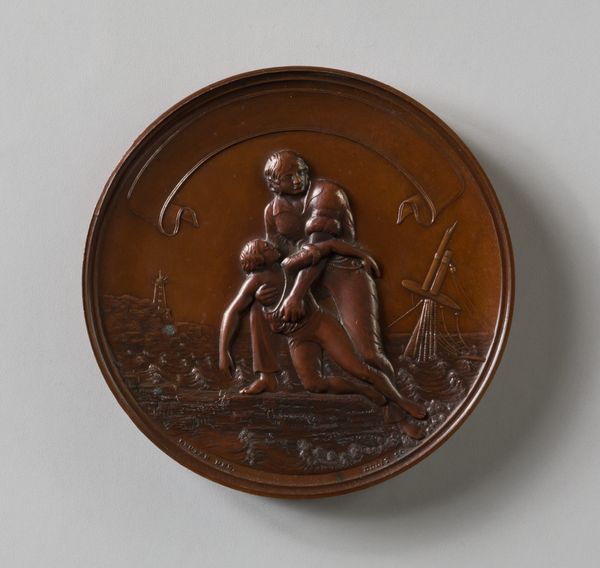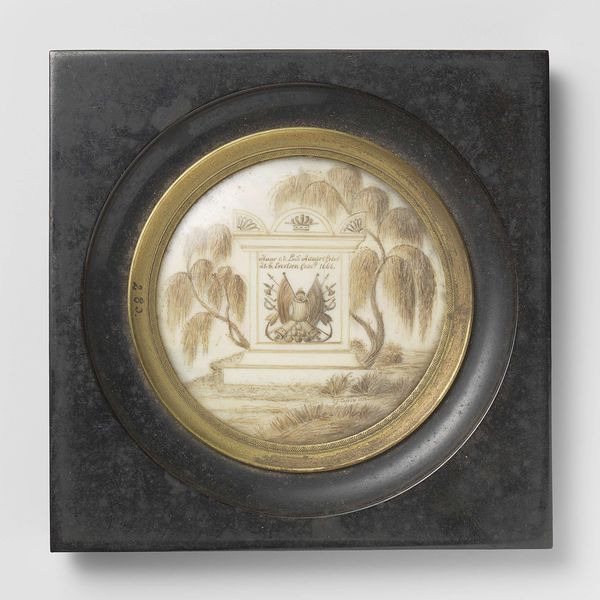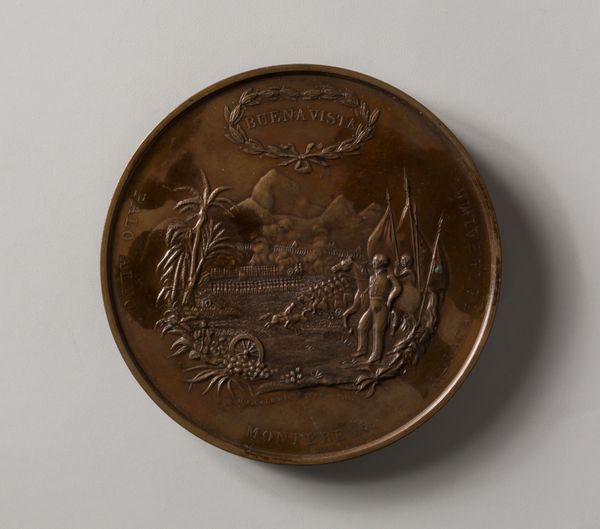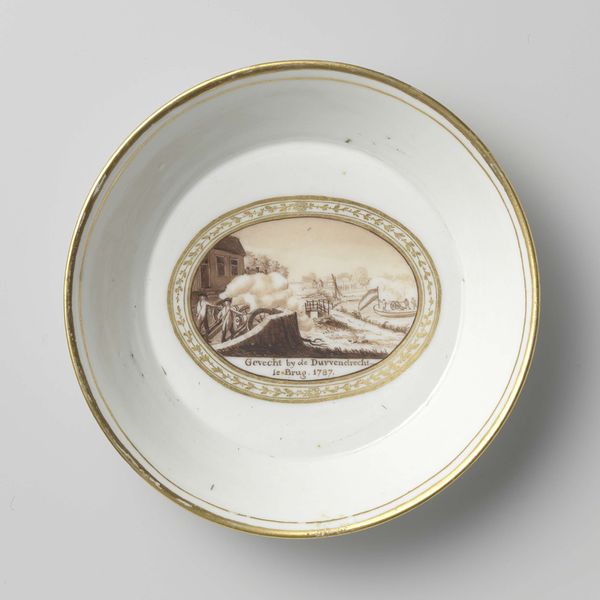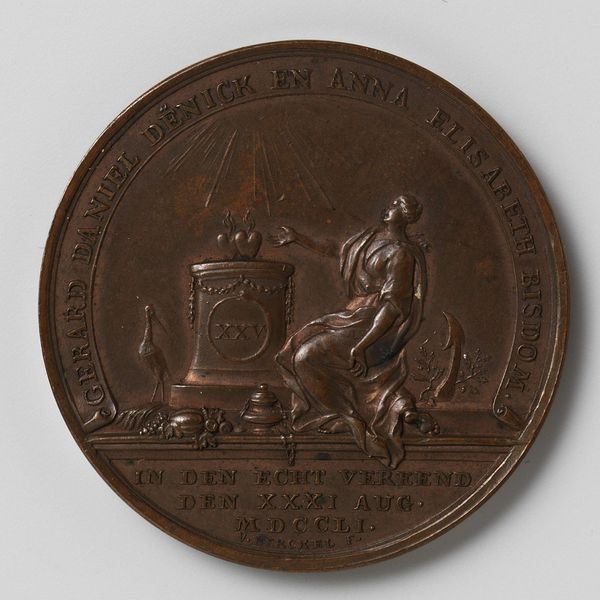
Dimensions: depth 4.6 cm, diameter 26 cm
Copyright: Rijks Museum: Open Domain
Curator: Alright, let's dive into this intriguing piece. We're looking at "Landing van Koning Willem I in Scheveningen," a bronze relief crafted in 1863 by Jan Willem Pieneman, currently held at the Rijksmuseum. Pieneman was quite renowned for his history paintings, often reflecting on the birth of the Netherlands as a constitutional monarchy. This work, steeped in Neoclassical aesthetics, appears to be celebrating a key moment in Dutch history. Editor: Wow, first impression: it feels both grand and strangely intimate. The small scale contrasted with such a monumental scene is unexpected, isn't it? It’s like history shrunk down to fit in your pocket! I can almost smell the sea air, even though it’s bronze. The figures, though tiny, exude such energy! Curator: Indeed. Pieneman presents us with the arrival of William I back in the Netherlands in 1813, a critical juncture after the Napoleonic era. But framing it in bronze, as a relief, grants the event a sense of timeless importance. How might we view this through the lens of national identity formation in the 19th century? Editor: Well, bronze equals durability, right? So it is saying this moment, this King coming back, is forever etched in stone, or well, metal! But it is interesting, because for me it feels nostalgic rather than purely celebratory. The artist is working almost 50 years after the actual event, isn’t he? Almost like recalling a story your grandfather told you… making the return even more legendary. Curator: Exactly! The choice of medium isn't accidental. Bronze connects the artwork to notions of permanence and idealized historical representation. It presents the monarchy as central to national cohesion, echoing similar commemorative works across Europe at the time, whilst legitimizing the monarchy's role in unifying a young, fractured nation. The composition, reminiscent of classical friezes, also places this event within a lineage of established power. It evokes, for its contemporary audience, specific ideological messaging linked to the sociopolitical role of the monarchy. Editor: True. Looking closer, you’ve got all the players, all meticulously placed and rendered. The way Pieneman’s crammed so many figures, tiny little human details in the artwork gives it this delightful 'Where's Waldo' feel but it definitely adds to this feeling of shared event. But also that he has rendered those boats like toys bobbing on the waves… gives me a sense of drama but with this distinct sense of theatricality and the circular frame only adds to that feeling… what do you make of it? Curator: The theatrical element serves to create a unified national narrative. It's history performing itself for the benefit of the present. Ultimately, through its medium, composition, and theme, Pieneman's relief reinforces particular national ideals tied to the House of Orange. It almost functions as a portable piece of propaganda! Editor: "Portable Propaganda!" I love it. In any case it makes you appreciate how deeply and with how many different voices any kind of history always speak to the present. Curator: Precisely. Looking at it now makes one think about national narratives, particularly regarding leadership and cultural identity. And who tells these stories is crucial.
Comments
No comments
Be the first to comment and join the conversation on the ultimate creative platform.
